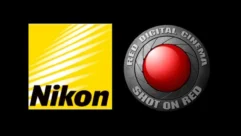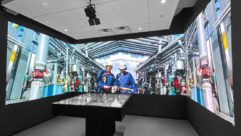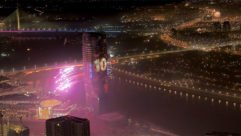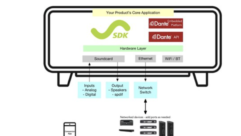A resolution for 2005
Dec 21, 2004 4:04 PM
If systems integrators serving the corporate AV market make any resolutions for the New Year, they’ll probably resolve to figure out once again just how to make money in an environment of technological and marketing whitewater.
The integrator’s bread and butter products, including projectors, plasmas, and LCD panels, all seem to be caught in a spiral of exponentially increasing demand and rapidly falling prices.
Consider the recent DisplaySearch report on current sales and forecasts for flat panel displays. This report, while noting that unit sales of plasma displays rose 95 percent in the third quarter of 2004 compared to the same quarter last year, also reported that revenues actually declined 1 percent from this year’s second quarter to the third, despite substantially improved volume. Unit sales reached a record of 873,000, but the average selling price dropped by 10 percent.
The picture isn’t much different for LCD television modules. Across all size ranges, from 20in. to 40-plus, unit shipments rose strongly in the third quarter compared to a year ago. Overall, shipments in Q3 were 125 percent above the same period in 2003. However, among the publicly traded suppliers that reveal financial results, DisplaySearch reports that earnings dropped 68 percent, gross margins fell from 34 percent to 17 percent, and net margins declined from 28 percent to 12 percent.
One cause of this phenomenon is the infiltration of mass market manufacturing and pricing into the professional sphere. Manufacturers are gearing up for production capacities that vastly exceed the annual needs of corporate and professional users. Customers are buying everything from plasmas to DLP-driven rear-projection displays for their rec rooms and home theaters. Texas Instruments, for example, recently reported it has shipped its 5 millionth DLP subsystem, noting that it has shipped its most recent 2 million DLP units in just the last eight months.
It’s a safe bet TI never expected that kind of ramp-up from the staging business, digital cinema, museums, or any of the other traditional professional AV venues.
Manufacturers like TI increasingly expect to play in the consumer arena, says Scott Spector, vice president of Barco Digital Cinema America. “The long-term big promise that a lot of the manufacturers are looking at is that the success of DLP in cinema will have a result in the consumer TV market,” says Spector.
Everyday exposure to high-definition, high-brightness display systems often means customers are less willing to pay top dollar either for hardware or for the services involved in providing it, says Alan Brawn of Samsung Electronics. “Business buyers are desensitized,” he says. “They see it everywhere. They don’t get excited about a piece of technology any more.”
Moreover, some corporate users are even finding they can stage sales meetings and other big events at the local Cineplex, where they can avail themselves of high-def digital projection and high-bandwidth networks on an as-needed basis instead of paying to install these resources on their own premises. “Corporate entertainment is going into the movie theaters,” said Nick Dager of Digital Cinema Report. “It’s a great opportunity for the theaters.”
And for the integrator and his/her corporate clients? Brawn and others say the answer is to focus on areas in which the integrator’s expertise is most critical—applications that don’t lend themselves to price-driven, off-the-shelf buying. Dynamic signage is one such field. Are there others? Finding that answer should make 2005 another challenging year.










